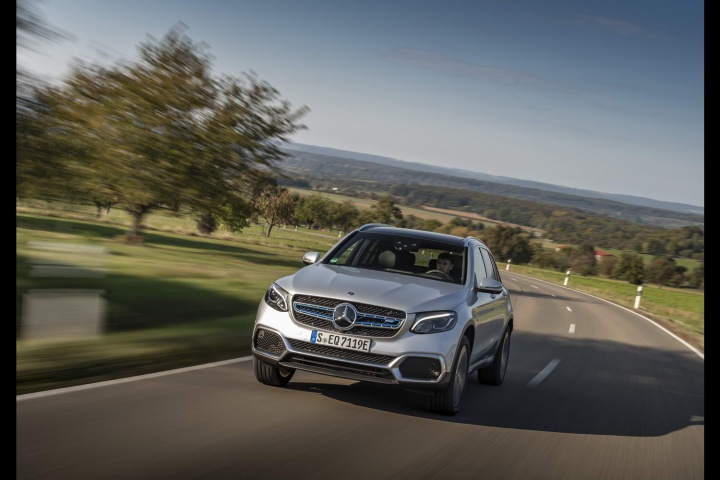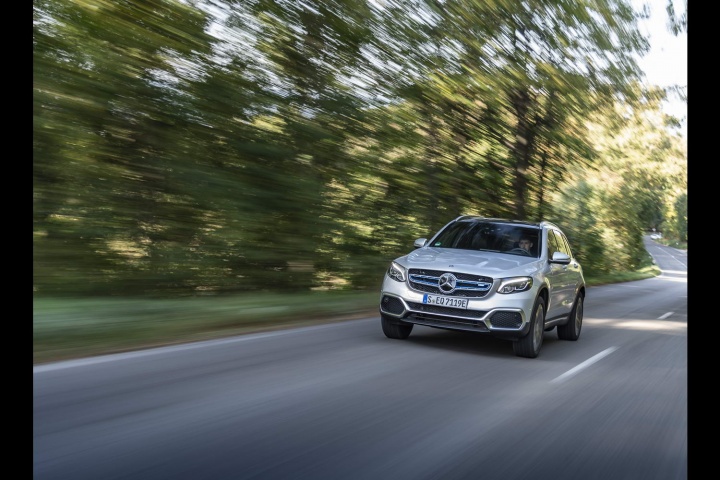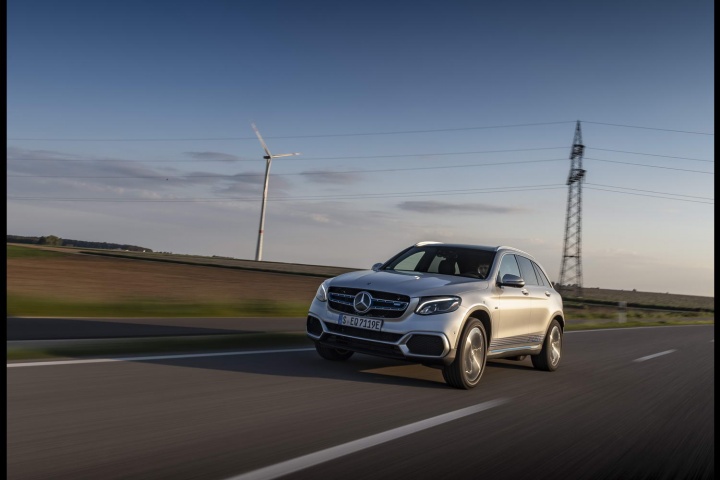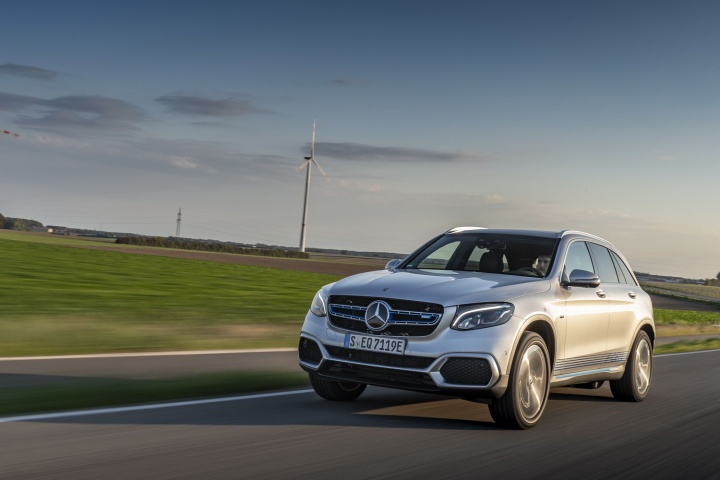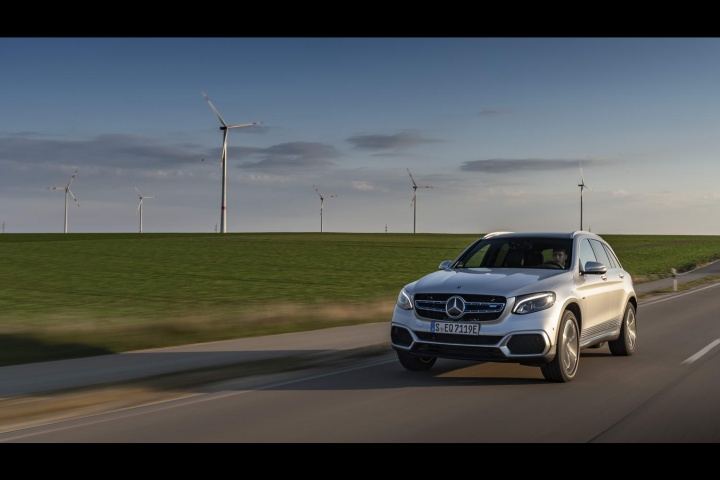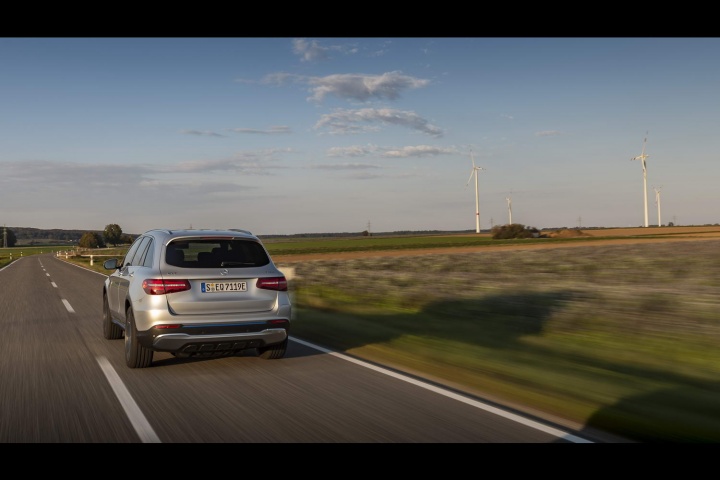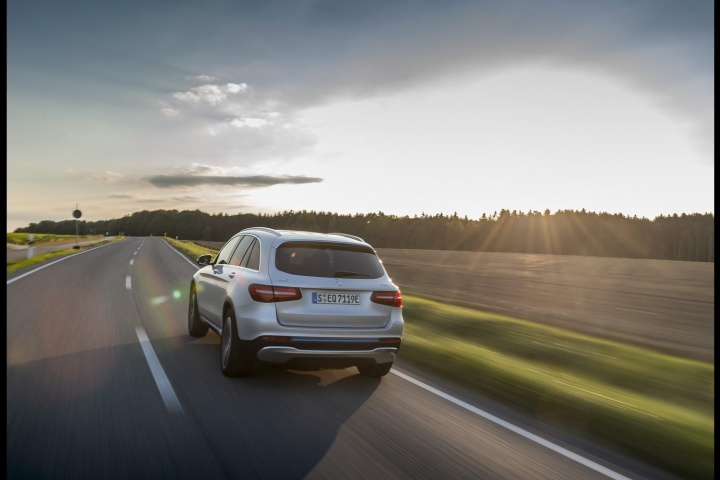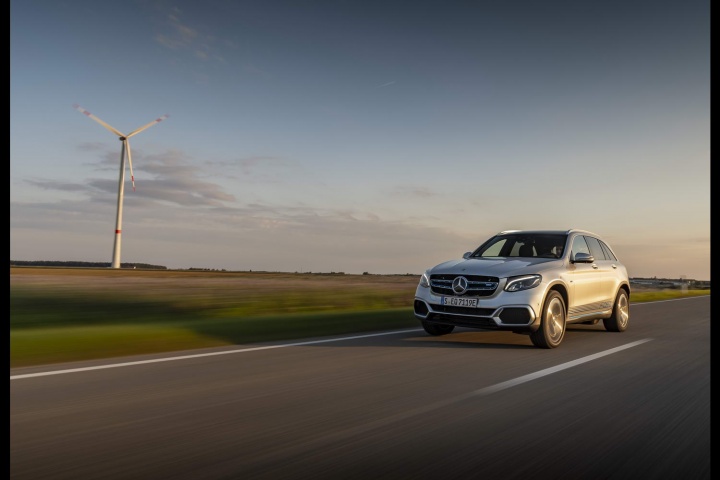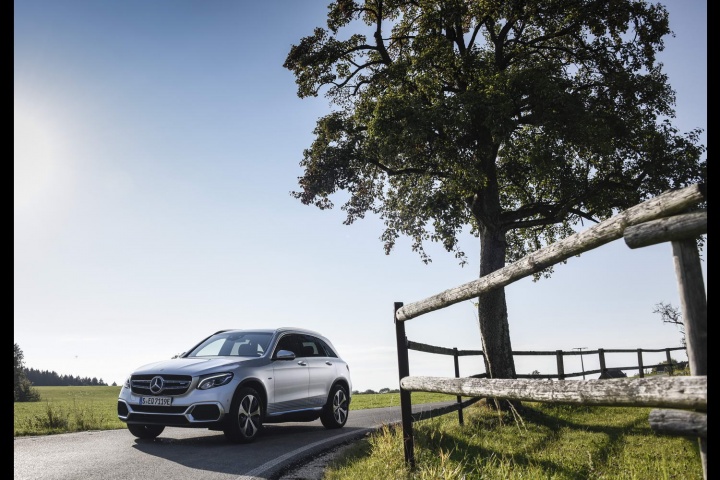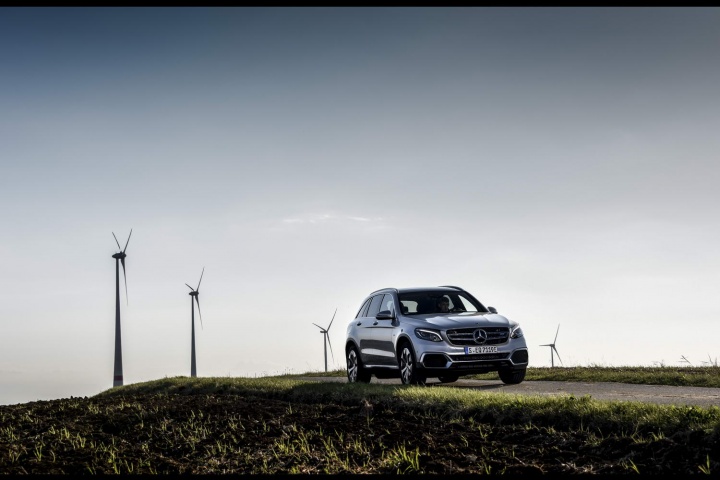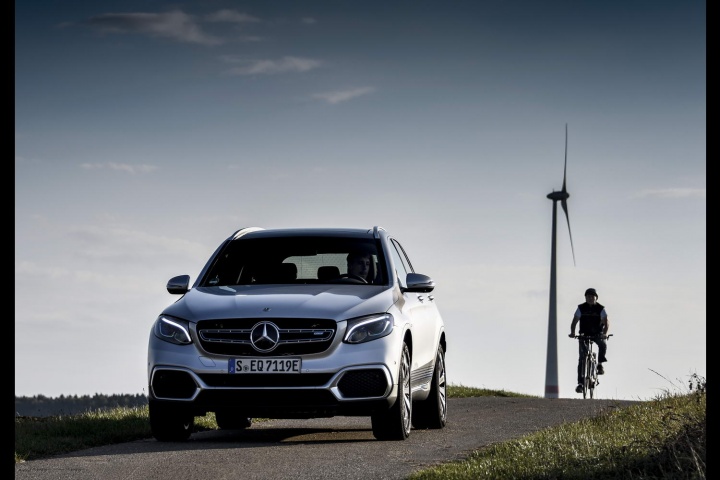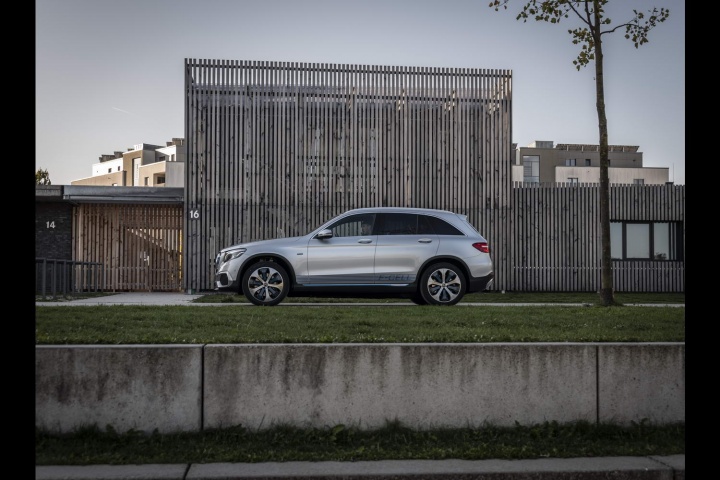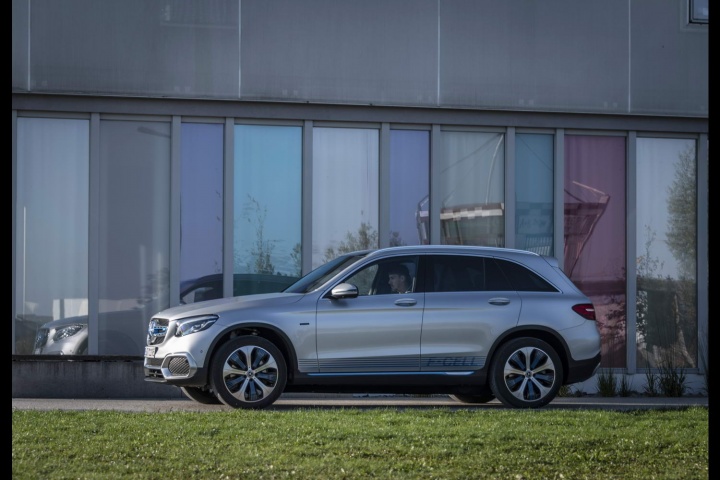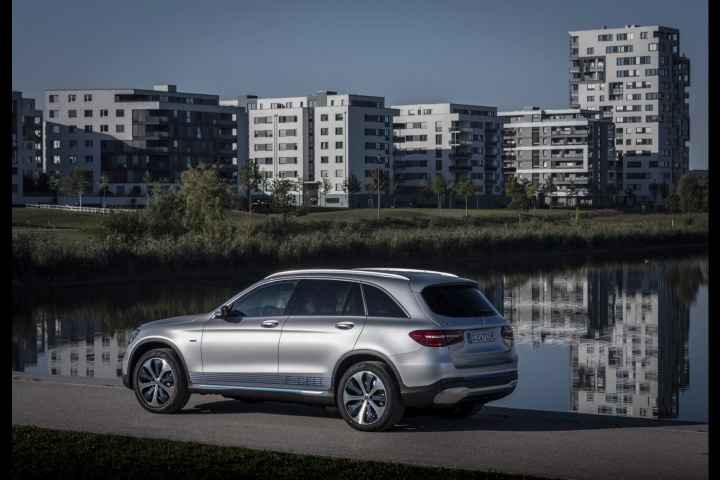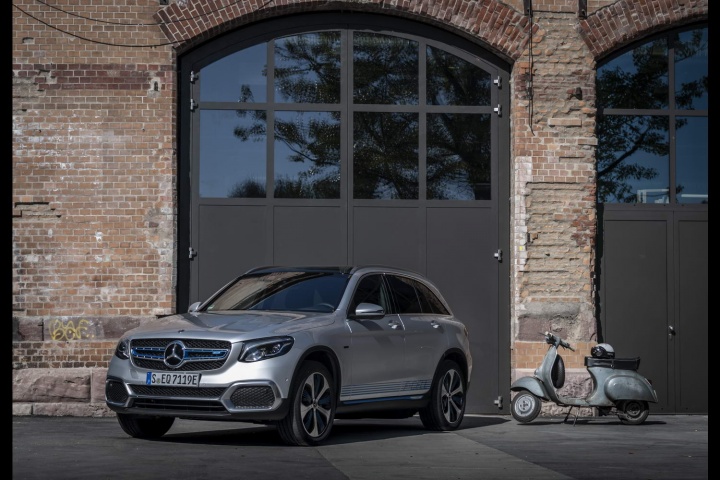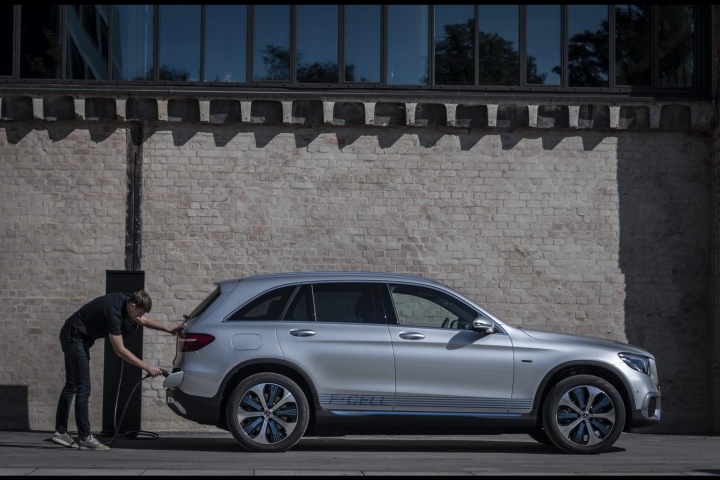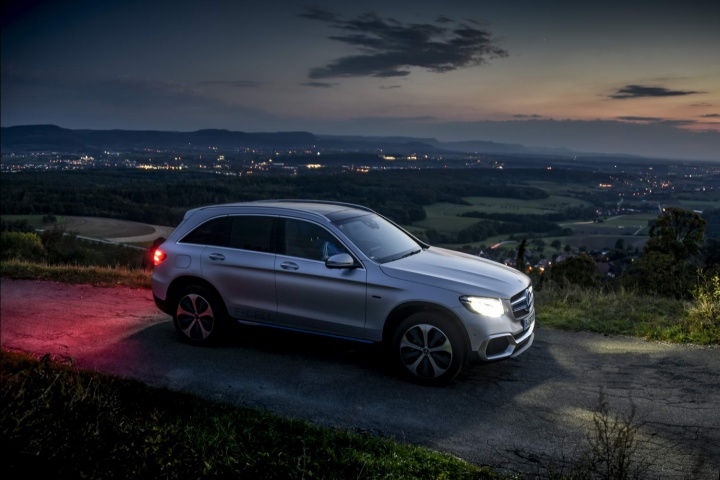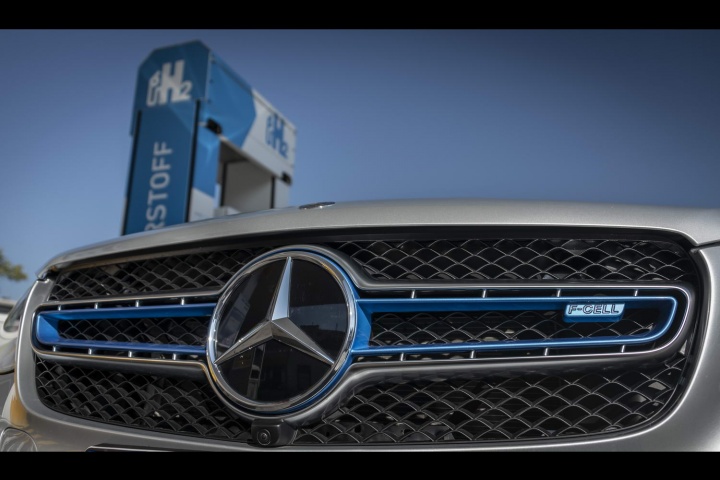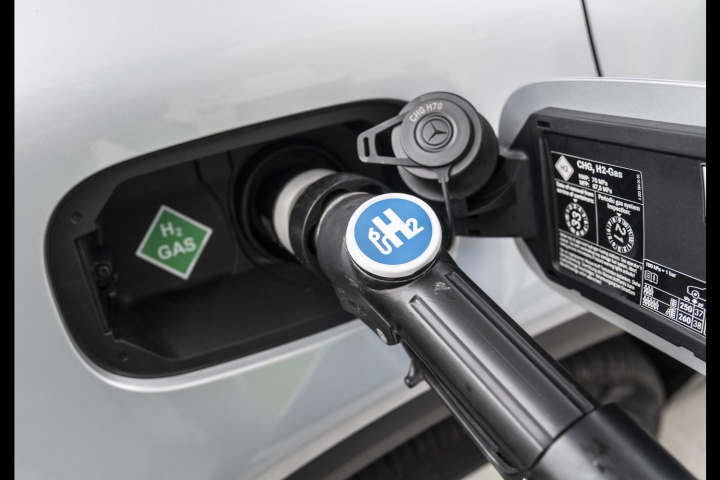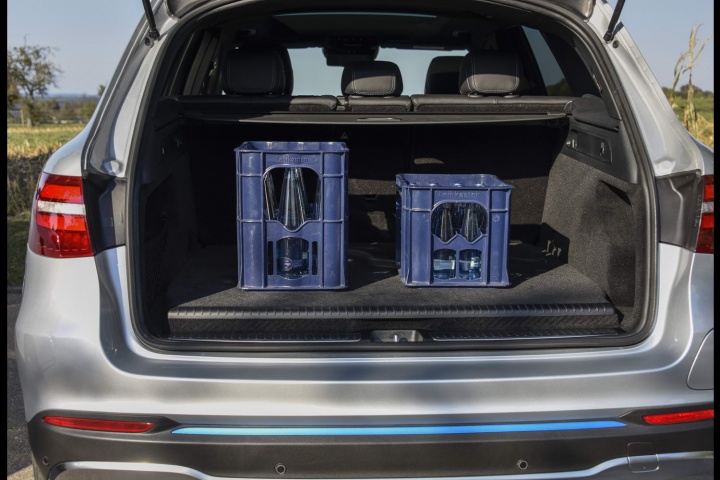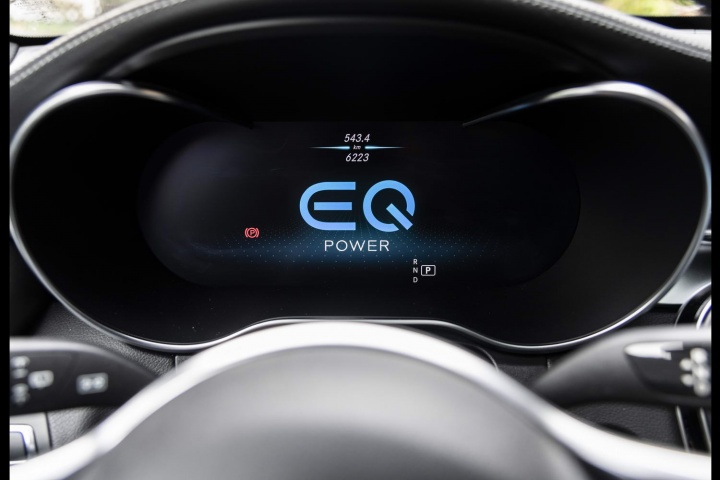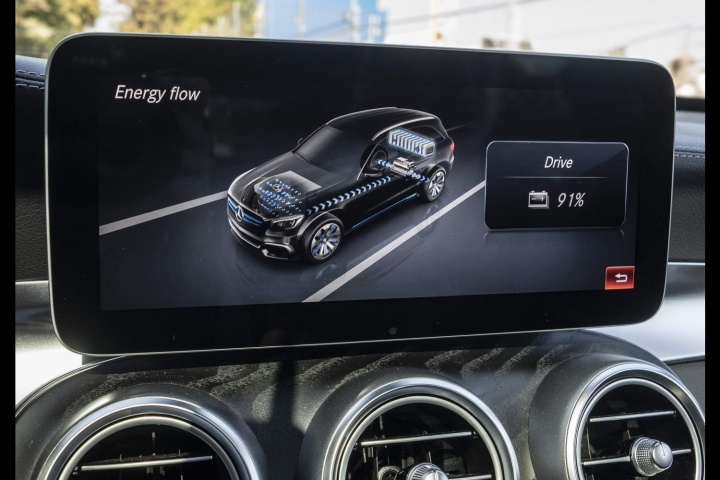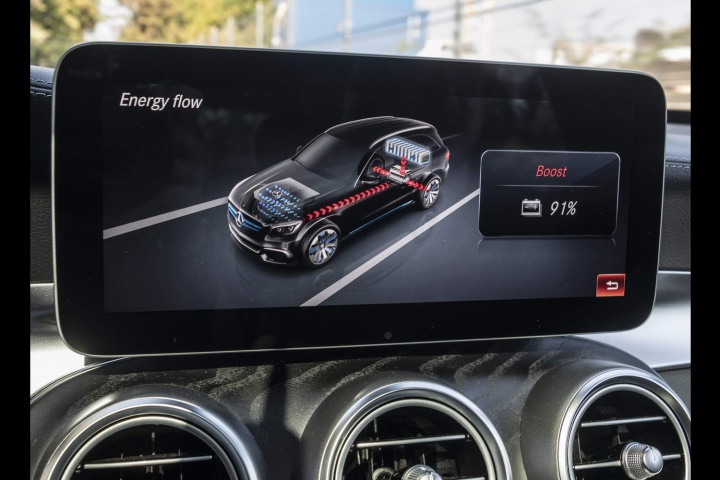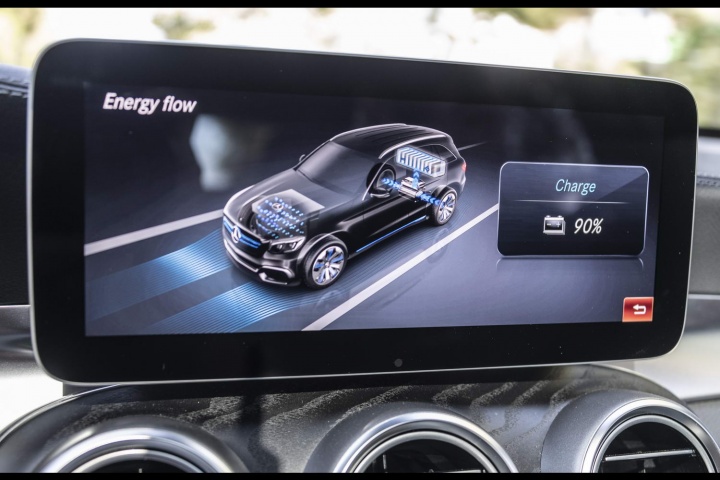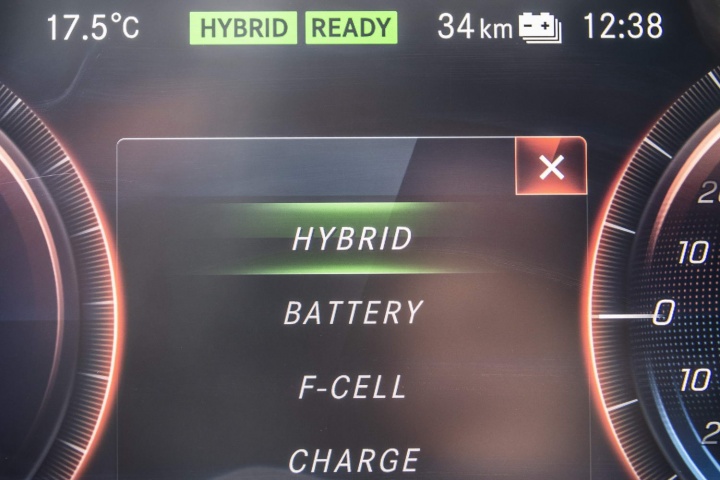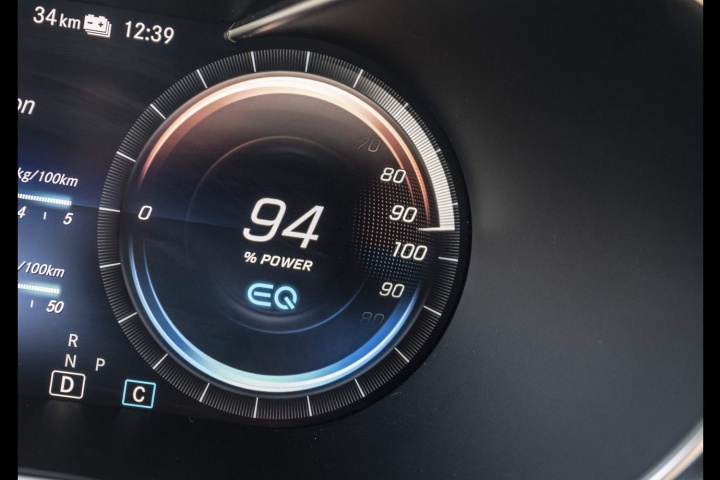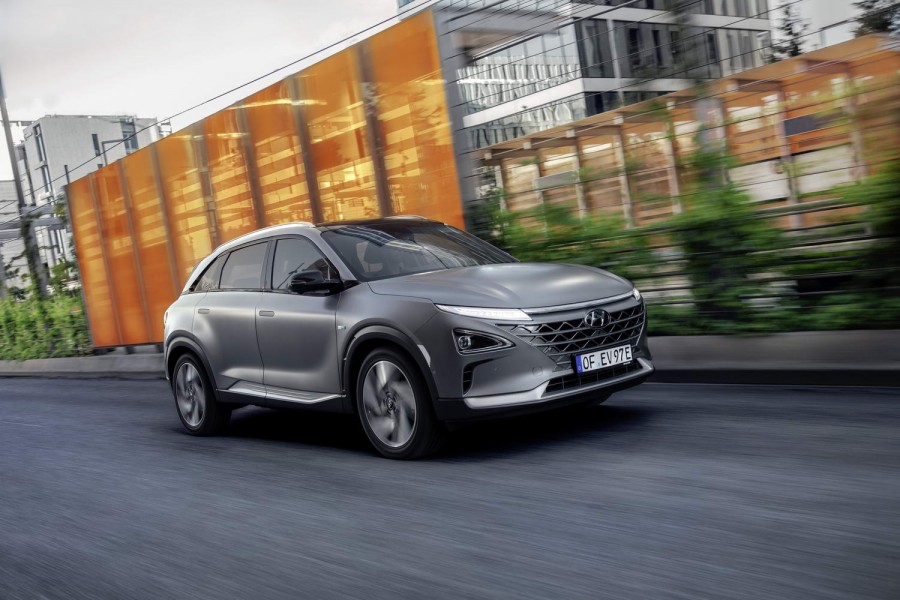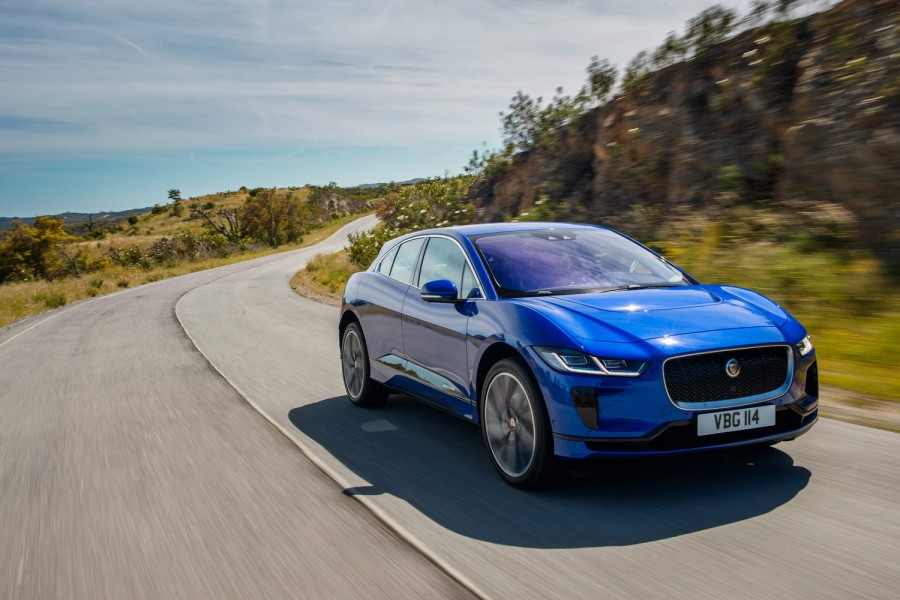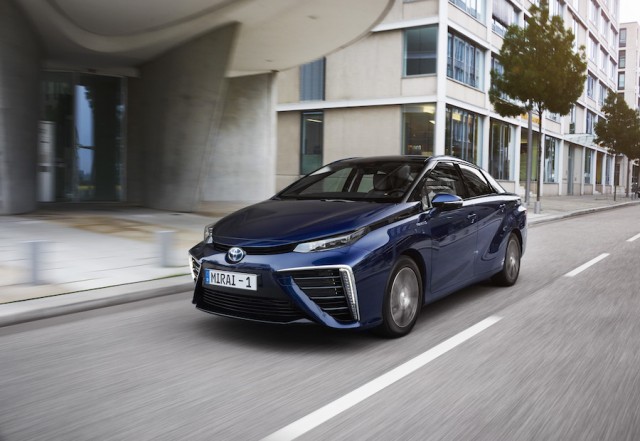With many car makers hedging their bets on the popular choice of future propulsion, Mercedes-Benz has created the GLC F-Cell - a plug-in hybrid version of its mid-size SUV that combines a hydrogen fuel cell with a lithium-ion battery to deliver a claimed range of 478 kilometres and zero emissions. It isn't coming to Ireland, but we thought it worth a test drive in any case.
In the metal
Only minor cosmetic changes differentiate the Mercedes-Benz GLC F-Cell from its internal combustion engined siblings. Blue is the adopted colour of the company's 'EQ' sub-brand (a name that will mark out its future pure electric models), this variant uses coloured accents to help set it apart.
The front end wears a unique grille insert that features a blue accent for a start, while the lower bumper gets a bespoke design incorporating a somewhat oversized air intake. Elsewhere on the car, there are other subtle differentiators, like the aero-optimised 20-inch wheels, a thin blue strip with 'F-Cell' badging that runs along the sills and a rear diffuser that solves the non-requirement for a traditional exhaust system. The rear bumper is also home to the charging port for its lithium-ion battery (as per most PHEV Mercedes-Benz cars), which makes up the plug-in hybrid part of the package. Filling the two carbon-fibre encased hydrogen tanks is done through a special port in the same place as the usual filler cap.
The big difference with this car over Mercedes' previous fuel cell vehicle, the B-Class F-Cell, is the advancement of technology in the fuel stack. It occupies the engine bay as a combustion engine would, but it is now 30 per cent more compact, while its internals have also improved, using 90 per cent less platinum. The whole system is 25 per cent lighter than before and it produces 40 per cent more driving power.
Despite all of that additional hardware crammed into the GLC F-Cell, Mercedes has still managed to retain almost the same boot space as its other GLC models, save for a small step. The rear seats are set higher by 40mm due to the placement of the hydrogen tanks beneath, but there are still sufficient levels of headroom for a car of this size.
Driving it
The Mercedes GLC F-Cell might sound like a very complex car and, in many ways, it is, but in essence it is no different to any other plug-in hybrid vehicle to drive. All that differs is that it uses a hydrogen fuel cell as its primary power source rather than an engine. Obvious benefits to that are the lack of any harmful tailpipe emissions and near-silent driving the whole time. That is assuming you live in a region where hydrogen refilling is available.
There's a choice of four driving modes for the GLC F-Cell: hybrid, F-Cell, battery and charge. The default setting when you begin driving is the hybrid mode and, just like any other type of hybrid, this draws power from both sources of energy. For the most part, it is the fuel cell that runs in its optimal mode, with any peaks in energy requirement such as a quick overtake, supplemented by the battery and electric motor.
Engaging the F-Cell mode takes the 13.5kWh battery element out of the equation, allowing for the car to save the battery's current state of charge. Alternatively, selecting the Battery mode does the opposite, running solely on power from the high-voltage battery until it is depleted. Then the fuel cell automatically kicks in. It has a water-cooled 7.4kW charger, which makes it suitable for two-phase alternating current (AC) charging at home and public charging stations. A full recharge takes approximately 90 minutes.
The final mode is Charge, which diverts some power to recharge the battery. One such instance where you might do this is before refilling the hydrogen tanks, ensuring that the maximum driving range is achieved. Refilling the two hydrogen tanks is a simple process that takes approximately three minutes. With the lithium-ion battery fully charged, it is capable of delivering up to 51km of driving range, while the hydrogen tank capacity of 4.4kg allows for up to 478 km (NEDC) of range in hybrid mode.
With the tech explained, how does it drive? Well, just like you might imagine an electric SUV to. Regardless of which power source is being used there is only the faint electric whirr as the GLC drives along. It's easy to fixate on the complex looking all-digital instrument cluster such is the amount of animation and figures tumbling around it, but beyond that, the GLC F-Cell delivers a smooth and refined experience. We spent most of our time in an urban environment where the suspension, which is tuned to a softer side, comfortably soaked up the variety of surfaces, speed bumps and tram lines. Its suspension setup consists of coil springs on the front axle and self-levelling air suspension on the rear to automatically adjust when the car is more heavily laden.
There is some body lean when you carry more speed into a bend, but it is controlled and predictable, retaining a healthy amount of composure. Its steering setup reflects this, erring more on the side of lightness instead of a weighty dynamic feel that might encourage you to hustle it along. It doesn't behave in a way we would expect a dedicated battery electric vehicle (BEV) that has its batteries in the floor to, but that isn't the GLC's remit in this instance. Nevertheless, it has much of that instantaneous pickup and torque that we've become used to with EVs. Noise suppression in the cabin is good and the build quality of the car we drove was to an expectedly high standard.
What you get for your money
Mercedes only has plans to initially introduce the GLC F-Cell in markets where there is already existing hydrogen filling infrastructure and right now Ireland isn't on that list, so for that reason, we aren't appointing a score in this section. The F-Cell model will only be made available on a full-service rental scheme, which means that buyers will lease the car, but all of its maintenance costs and possible repairs will be included, in addition to a comprehensive warranty package. As you might expect, the GLC also features a full suite of connected services, including the 'Mercedes me' app. With this, the user can see, via their smartphone, the car's location, the current state of charge and hydrogen fuel levels, while they can also pre-set the climate control.
Summary
If you live in a region where access to hydrogen is easy, then the Mercedes-Benz GLC F-Cell makes for an appealing vehicle. Providing a comfortable and quiet driving experience with no shortage of refinement, wrapped up in an SUV shape, it ticks a lot of boxes. Add to that the conscience-salving lack of tailpipe emissions, in tandem with an extended driving range and refilling times comparable with a petrol or diesel car, and it should be enough to entice some buyers. Just not those in Ireland...

